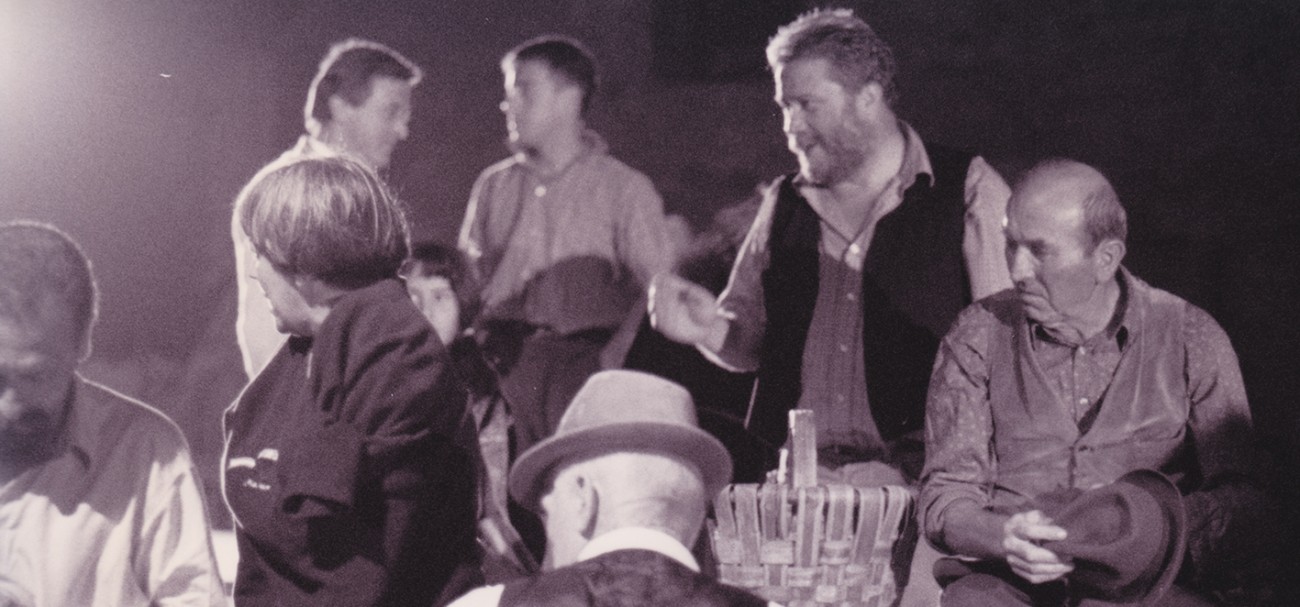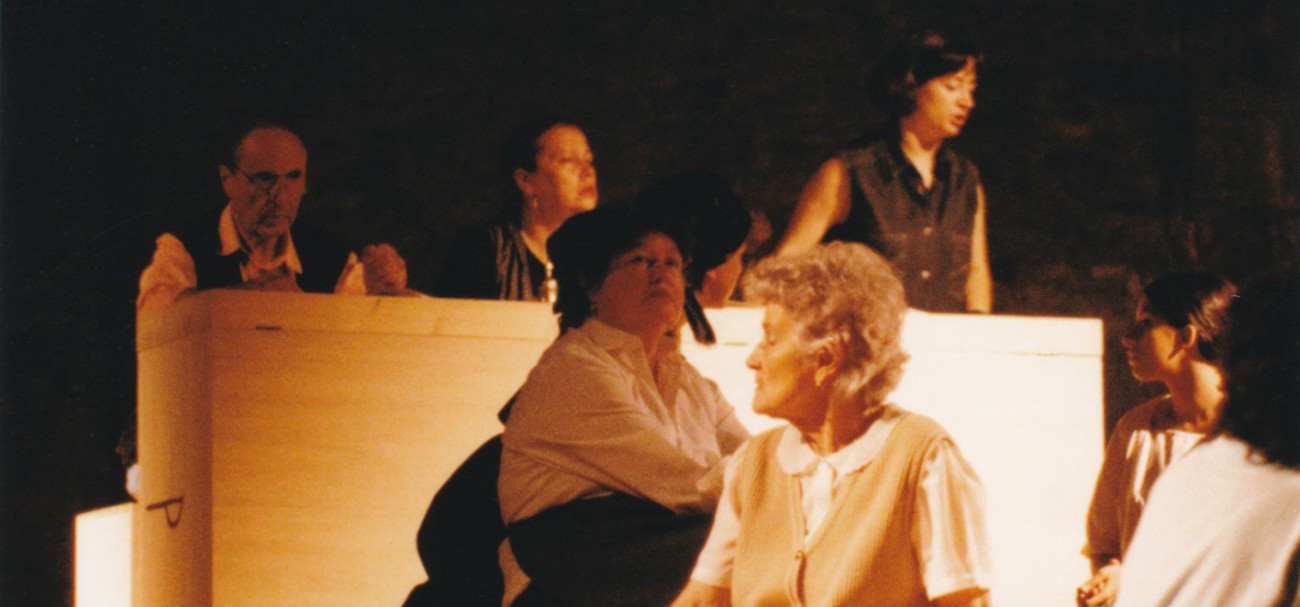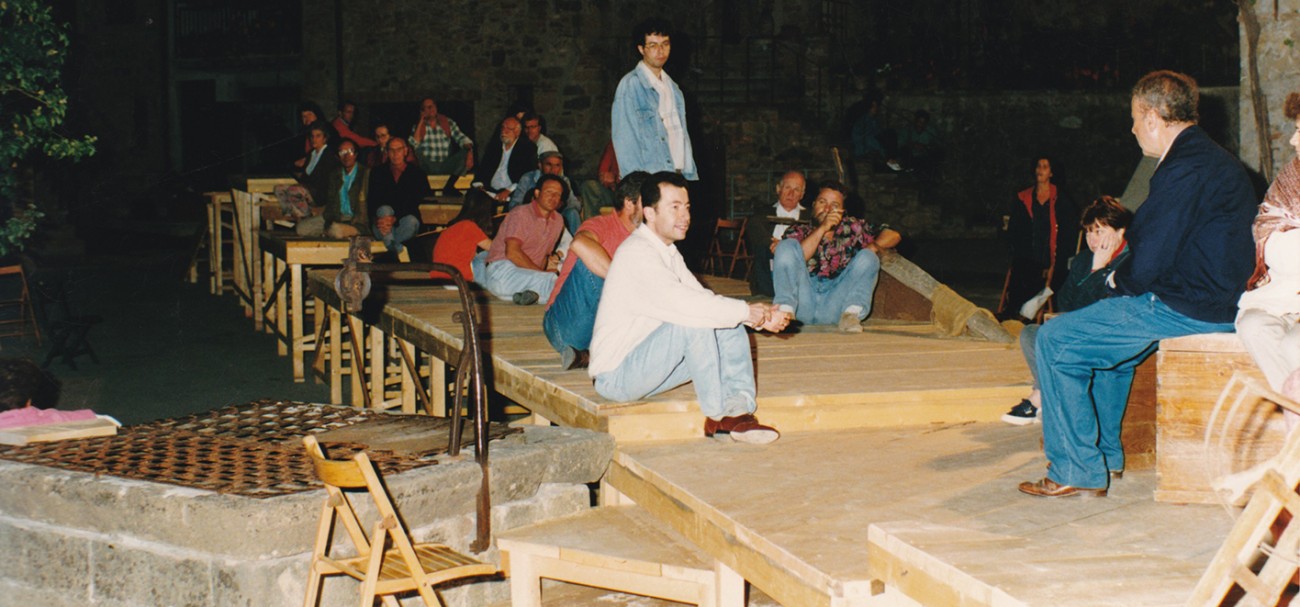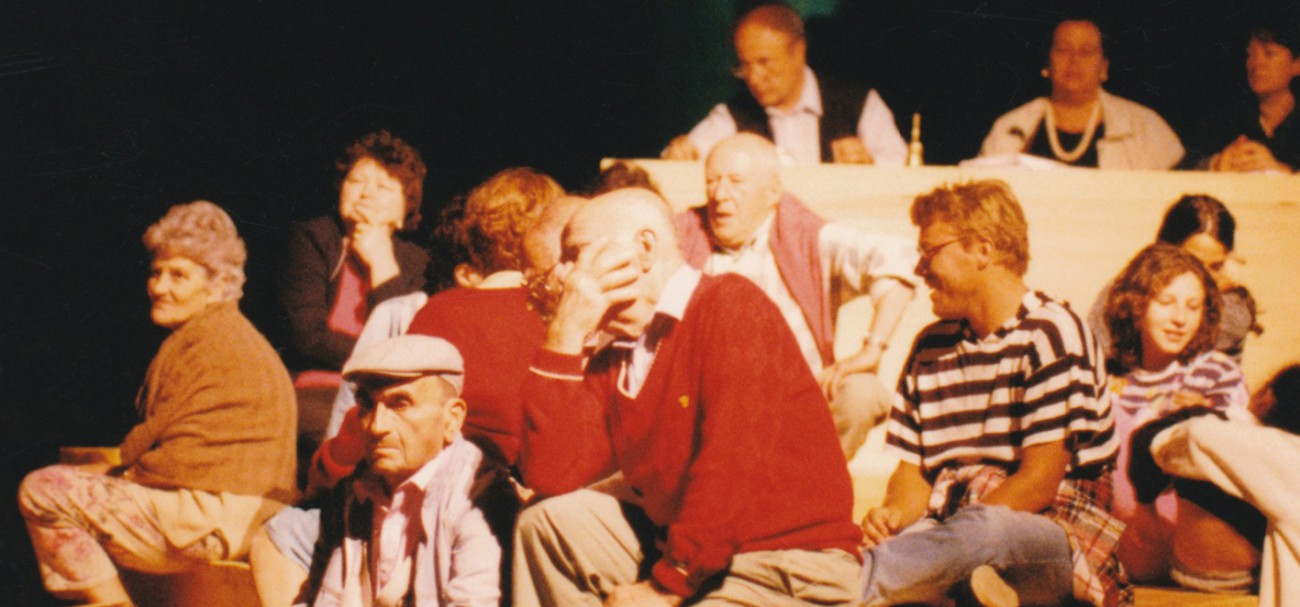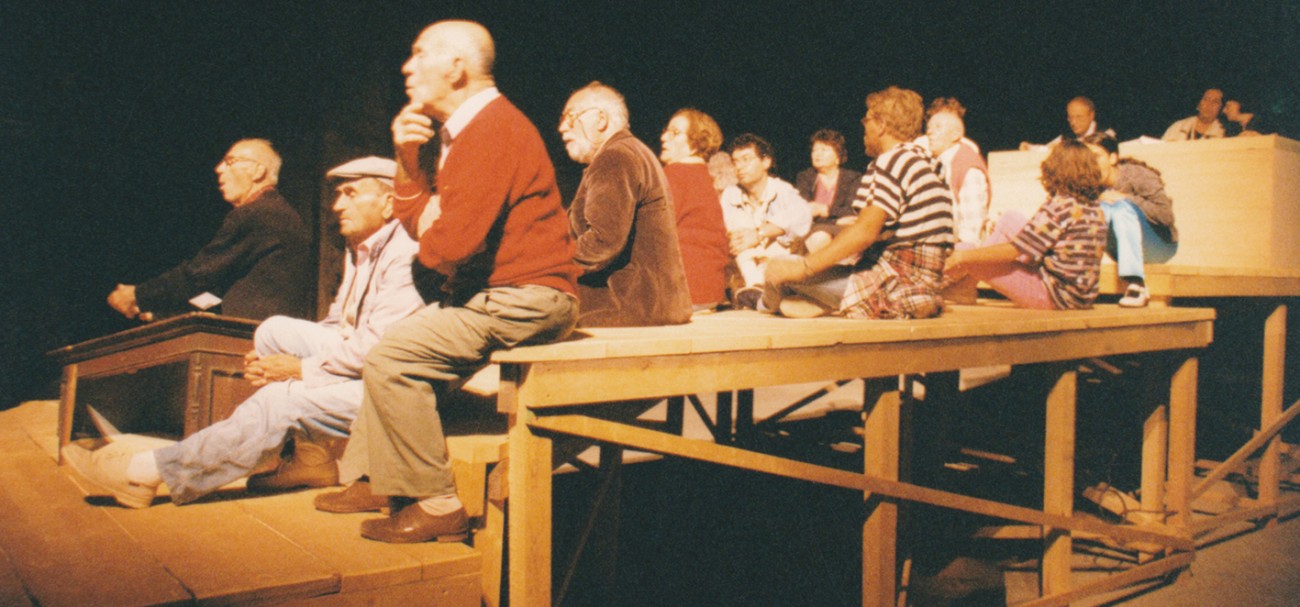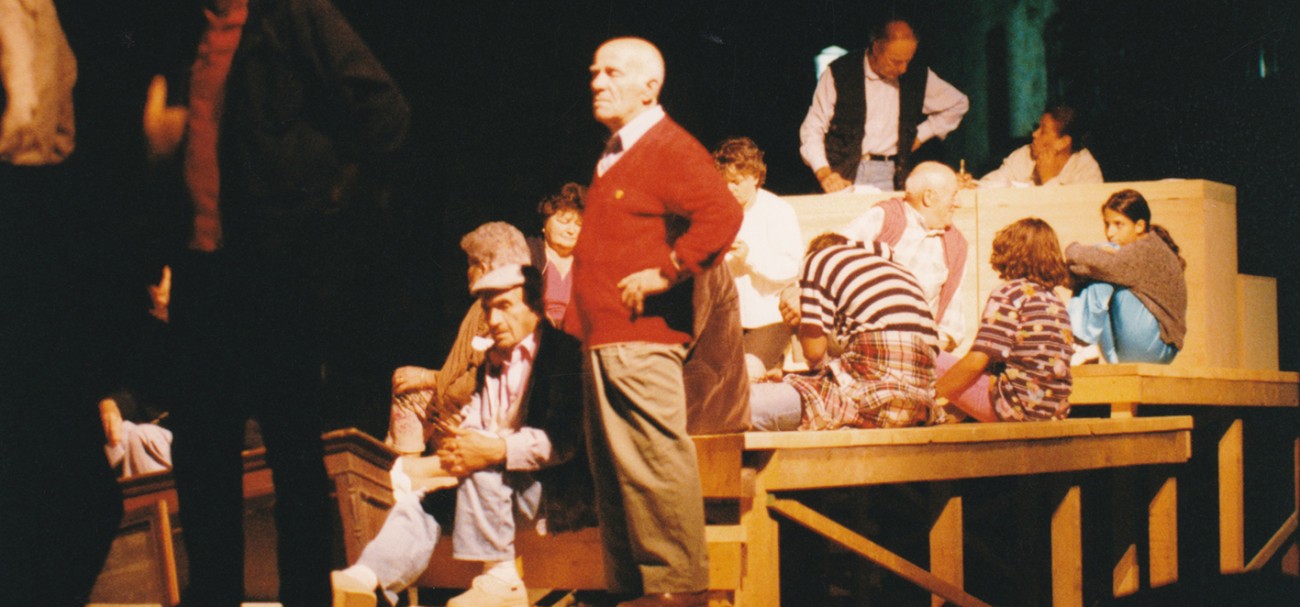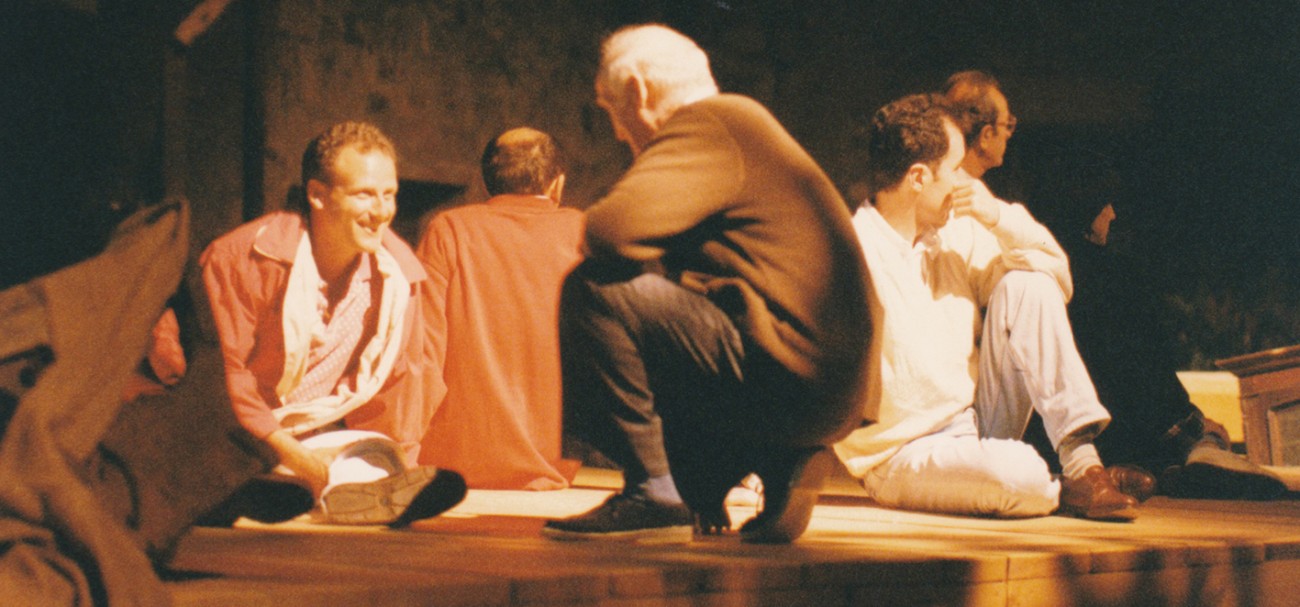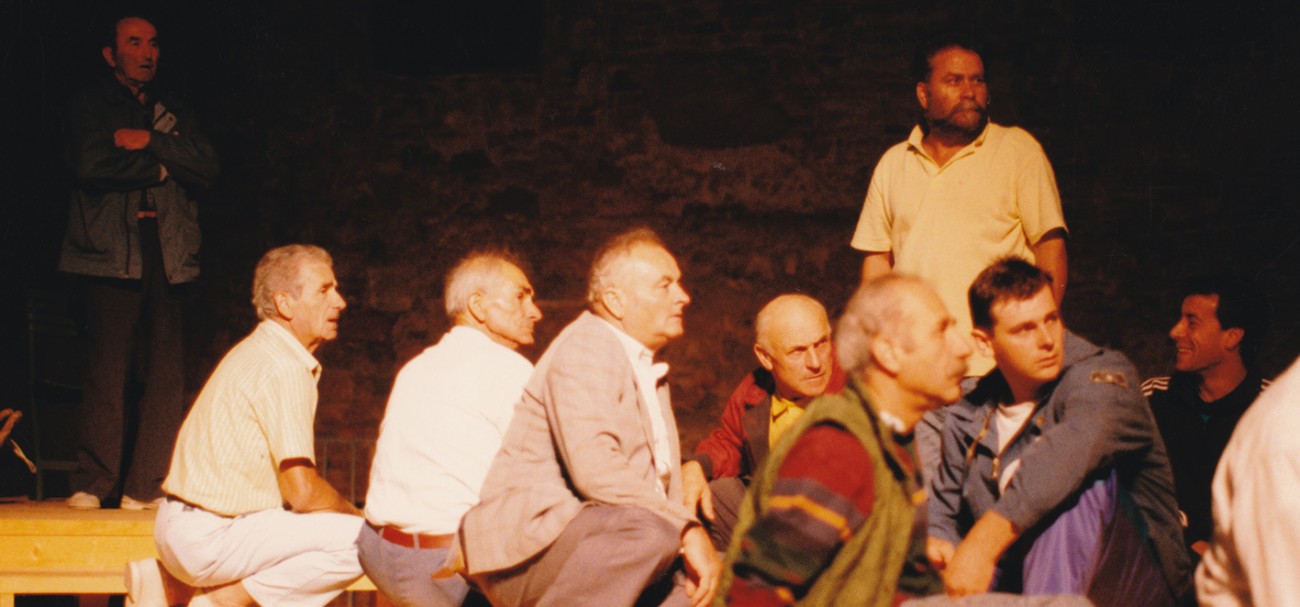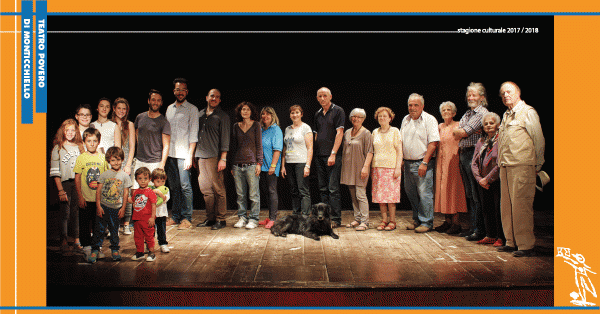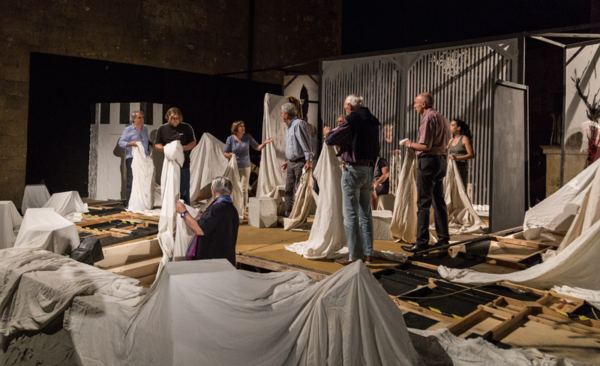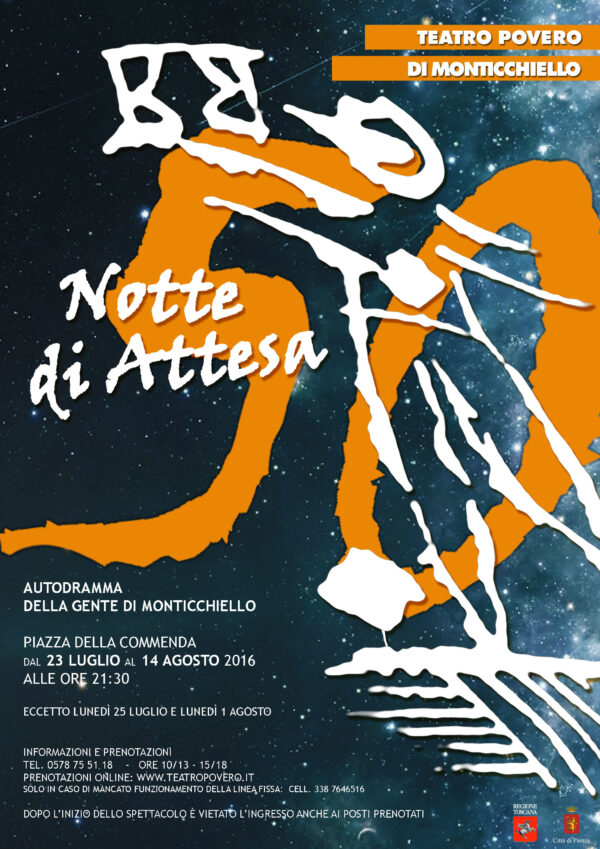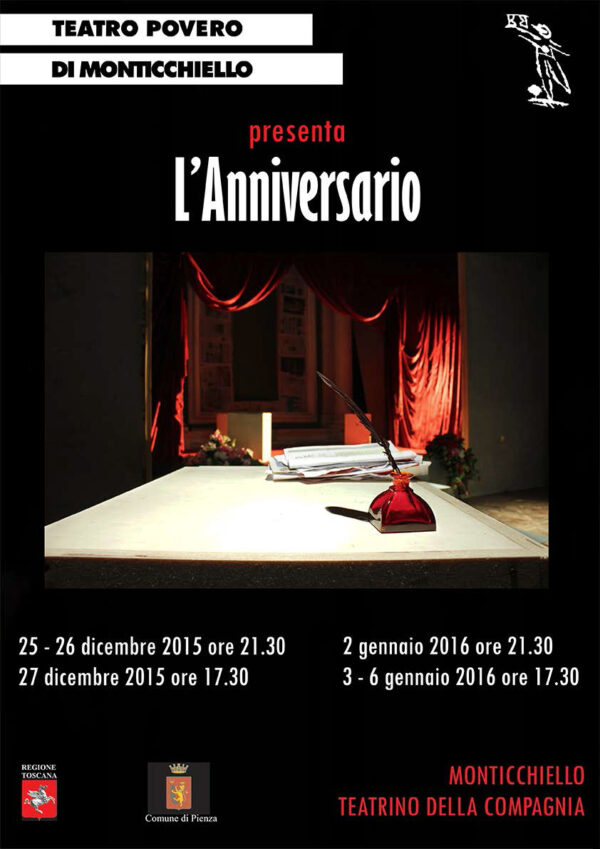This year there was a radical alteration in the scenic arrangements in Piazza San Martino. In previous years, a set of raked seats had overlooked one half of the square from another, and the asphalted ground surface had been the stage. This time the stage was a thirty-metre platform cutting diagonally across the two piazzette (sometimes evoking a ‘road’, a journey, rather than a fixed space). The audience was divided into four areas, slightly below the actors rather than above them.
The theme of the autodramma was that of ‘memory’, starting once again with a scene involving a peasant family faced with the collapse of sharecropping, and with the need to move on to a new life in a completely changed economic and social world. Then it became apparent that this was a drama within the autodramma, a scene being rehearsed by Monticchiello’s company. The rehearsal was interrupted by the absence of one of the actors, who was more concerned with preserving his sickle, the tool which represented his former life and his identity. His attitude provoked a series of arguments among (fictional, or semi-fictional) actors of the Teatro Povero: a whole range of opinions were explored, about whether there was still any point in dramatizing a ‘peasant civilization’ which was now dead, and which the younger generation could not remember or identify with. In the end the company—and the audience—were gently urged to take seriously the objects and artefacts which survived from a past world, to afford them some respect and dignity. Examples of such objects were revealed, scattered around the new scenic space.
(It was no coincidence, perhaps, that at this time Monticchiello was considering the creation of a museum of Tuscan agricultural life. Eventually this became the rather different project known as ‘TEPOTRATOS’, which is still present in the village.)

